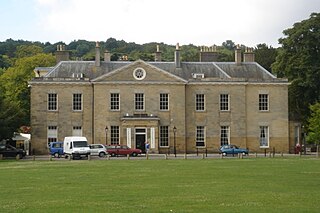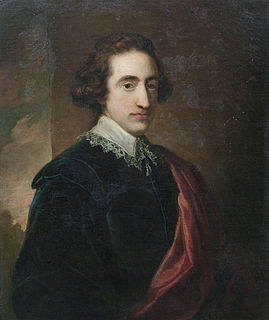Patrick Stuart (c. 1682–1760) [1] was a Scottish officer in the British Army and a politician.

The British Army is the principal land warfare force of the United Kingdom, a part of British Armed Forces. As of 2018, the British Army comprises just over 81,500 trained regular (full-time) personnel and just over 27,000 trained reserve (part-time) personnel.
Stuart was the second son of Alexander Stuart of Torrance and his wife Isabel, daughter of Sir Patrick Nisbet, 1st Baronet, of Edinburgh. James Stuart MP was his older brother. [2] [3]

Torrance is a village in East Dunbartonshire, Scotland, located 8 miles (13 km) north of the Glasgow city centre. Torrance used to mainly consist of farmland. The village was once famous as a resting place for workers on their way to the Campsie Fells 4 miles (6.4 km) north. The Forth and Clyde Canal has a wharf nearby at Hungryside, and the A807 runs along its southern edge. The village has an active community charity whose aims are to improve the village facilities.
James Stuart, of Torrance, Lanarkshire, was a Scottish officer in the British Army and a politician who sat in the House of Commons between 1734 and 1741..
Stuart joined the army in 1704 as an ensign in the 1st Foot, was promoted to lieutenant in 1707, and captain in 1727. [2]
Ensign is a junior rank of a commissioned officer in the armed forces of some countries, normally in the infantry or navy. As the junior officer in an infantry regiment was traditionally the carrier of the ensign flag, the rank acquired the name. This rank has generally been replaced in army ranks by second lieutenant. Ensigns were generally the lowest ranking commissioned officer, except where the rank of subaltern existed. In contrast, the Arab rank of ensign, لواء, liwa', derives from the command of units with an ensign, not the carrier of such a unit's ensign, and is today the equivalent of a major general.
Lieutenant is a junior officer rank in the British Army and Royal Marines. It ranks above second lieutenant and below captain and has a NATO ranking code of OF-1 and it is the senior subaltern rank. Unlike some armed forces which use first lieutenant, the British rank is simply lieutenant, with no ordinal attached. The rank is equivalent to that of a flying officer in the Royal Air Force (RAF). Although formerly considered senior to a Royal Navy (RN) sub-lieutenant, the British Army and Royal Navy ranks of lieutenant and sub-lieutenant are now considered to be of equivalent status. The Army rank of lieutenant has always been junior to the Navy's rank of lieutenant.
Captain (Capt) is a junior officer rank of the British Army and Royal Marines and in both services it ranks above lieutenant and below major with a NATO ranking code of OF-2. The rank is equivalent to a lieutenant in the Royal Navy and to a flight lieutenant in the Royal Air Force. The rank of captain in the Royal Navy is considerably more senior and the two ranks should not be confused.
He was returned in the interest of the 6th Duke of Hamilton as the Member of Parliament (MP) for Lanarkshire at a by-election in 1750. He held the seat until the next general election, in 1754. [2]

James George Hamilton, 6th Duke of Hamilton and 3rd Duke of Brandon, KT was a Scottish peer.
Lanarkshire was a county constituency of the House of Commons of the Parliament of the United Kingdom (Westminster) from 1708 to 1868. It elected one Member of Parliament (MP) by the first past the post voting system.
Stuart succeeded to his brother's estates in 1743, and died unmarried in 1760. [2]




